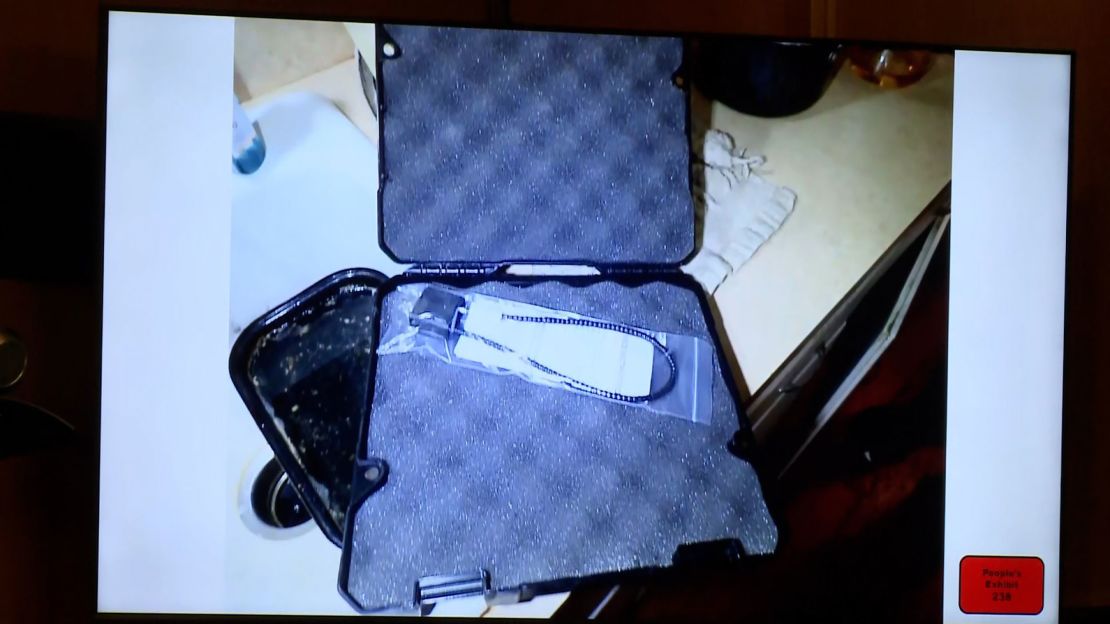
In Short
- James crumbley’s trial unveils crucial details about the gun safe combination, shedding light on parental negligence and firearm security.
- Digital evidence played a significant role in the proceedings, showcasing the complexities of modern criminal trials.
- The case serves as a stark reminder of the importance of responsible gun ownership and parental oversight.
TFD – Delve into the gripping details of James Crumbley’s trial, where the gun safe combination became a critical piece of evidence, highlighting issues of parental responsibility and firearm security.
All but one of the 15 prosecution witnesses who appeared in James Crumbley’s manslaughter trial last month had already testified in his wife’s trial.
Prosecutors proved that all parents were “grossly negligent” in permitting their teenage son, Ethan, to possess a gun and in ignoring indicators of his rapidly declining mental health by calling on the same shooting survivors, police investigators, and school personnel as witnesses in each trial.
The similarity between the two trials overall is shown in the overlap of witnesses. In connection with their son’s involvement in the November 30, 2021, mass shooting at Oxford High School in Michigan, both parents were found guilty on four counts of involuntary manslaughter. They will be sentenced next month and might spend a maximum of 15 years in prison.
Even with those parallels, the trials took quite a different turn.
The prosecution of Jennifer centered a great deal of attention on her private life, examining her numerous text messages, her bond with her son, and even her adulterous affair. On the other hand, James’s case focused more on how he obtained the family’s weaponry than it did on his personal life.
Oakland County Prosecuting Attorney Karen McDonald agreed that the evidence in the two trials was very different in an interview with CNN’s Jean Casarez.
“It’s an extremely uncommon situation to have one trial so soon after another, so alike, centered around the same facts,” McDonald remarked. Therefore, even though the first experiment taught us certain things, they were drastically different. Different attorneys and different evidence were present.
The prosecution’s varying emphasis on guns and mental health, each parent’s legal defense plan, and the volume of digital data all contributed to the discrepancies.
The legal defense plan
James Crumbley chose not to testify in his own defense, whereas Jennifer Crumbley did, which made a significant difference in the proceedings.
Jennifer Crumbley showed no remorse for her acts when testifying, placing the responsibility on her husband, her son, and the school. She stated in her testimony, “I’ve asked myself if I would have done anything differently, and I wouldn’t have.”
In the meanwhile, James Crumbley chose not to testify. “I have chosen to keep quiet,” he declared in court.
Their more comprehensive legal defense tactics were reflected in the two rulings.
In Jennifer Crumbley’s trial, a pretrial judgment had prohibited any discussion regarding her extramarital romance with a local firefighter by either side. However, halfway through her trial, Jennifer consented to admit that evidence and waived the ruling, claiming she believed her attorney’s suggested shift in tactics.
Defense attorney Shannon Smith told the court, “Her life is more important than her dignity in terms of – she had an affair, lots of people have affairs.” “In the end, it doesn’t mean you know your child is a school shooter,” the speaker said.
Judge Cheryl Matthews stated, “Since this is not a trial about her morality, I want to make sure that we stay true to the elements of the case and what you’re required to prove, which is not that she’s a bad person.” “We’re not here to talk about that.”
Mariell Lehman, James Crumbley’s lawyer, aimed to restrict the amount of evidence that might be used in his case. She contended in the closing remarks that there was insufficient evidence to find someone guilty beyond a reasonable doubt.
She stated, “You saw no evidence and you heard no testimony that James had any knowledge that his son was a danger to anyone.”
Smith and Jennifer Crumbley will not be doing interviews at this time, according to a statement they posted on Thursday. “We think the community, the victims, and their families deserve and need the time and space to start healing from this tragedy,” Smith stated.
An inquiry for comments was not answered by Lehman.
The volume of electronic proof
James did not give a lengthy digital trail of his thoughts and feelings, whereas Jennifer did, which was another significant difference between the two trials. Because of this disparity, the jury was given more information about her personal life than his.
Jennifer was texting multiple persons prior to, during, and after the shooting, as was disclosed throughout her trial, and she was giving a running commentary on her feelings and behavior.
When she realized her kid was the shooter and their pistol was missing, she messaged her work and begged him not to dismiss her. “My job is essential,” she wrote. Please don’t hold me responsible for my son’s actions.
On the morning of the shooting, she texted the owner of a horse farm to let him know that her kid was “having a hard time” and “can’t be left alone.” She then emailed her response to the attack. Jennifer Crumbley wrote, “I wish we had warnings.. Something.”
After the shooting, she sent a message to her partner who was not married, considering her own parenting abilities. “As a parent, I failed,” she stated in a note. “I performed terribly.”
Her other posts on the internet strengthened the prosecution’s position. She talked about her and Ethan’s trip to the gun range and his new SIG Sauer 9mm rifle on social media a few days before to the attack. She posted a picture of the rifle along with the caption, “Mom & Son Day testing out his new Christmas present.”
Moreover, Jennifer Crumbley received a call from a teacher the day before the incident informing her that her son had been staring at bullets on his phone during class. She texted her son, saying, “Lol, I’m not mad, you have to learn not to get caught.”
Guns versus mental health

The trials’ focal points varied as well. While James’s trial focused on his gun safety procedures, Jennifer’s trial probed deeper into her knowledge of her son’s mental health concerns.
Prosecutors used some of Jennifer’s text messages with her son as evidence in her trial to suggest that she was aware of his mental health issues but chose not to address them.
According to text records, she texted her husband once in March 2021, saying that she was going to “get drunk and ride my horse.” Records indicate that after receiving a message from her son that evening regarding a demon hurling objects at the house, she called him for 19 seconds an hour later. In another instance, Ethan sent a series of texts about his hallucinations, but she did not call or text him until the next day, and evidence showed the parents were again at the horse barn, a detective said.
Jennifer Crumbley stated on the witness stand that she thought Ethan was just “messing around” in these texts as part of a running joke about their haunted house.
The guns were not the main focus of her prosecution. She attested that her spouse was in charge of them. “I simply didn’t feel like I belonged in charge of that.” I let him handle it because it was more of his thing,” she remarked.
James Crumbley’s trial, on the other hand, was primarily concerned with how he kept the three guns in the house.
Ethan emailed his friend a video in August 2021 that showed him loading and managing a rifle shortly after midnight. “I assumed my dad left it out. ‘Why not’ haha,” he wrote, in correspondence revealed in court. According to forensic analyst Edward Wagrowski’s testimony, both of his parents were at home at that time.
Additionally, James bought his kid a SIG Sauer 9mm gun on Black Friday 2021. He later admitted to detectives that he concealed the gun in an armoire case and concealed the ammo under some jeans in a different location. A cable lock that was sold with the SIG Sauer was discovered in its plastic packing, according to an investigator.
Although no further firearm locking systems were discovered in the house, the defense questioned whether a new locking mechanism might have been utilized to secure the firearm.
Ultimately, the detective testified that the combination to unlock the gun safe in the parents’ bedroom dresser included the factory default setting, “0-0-0,” which prevented access to the two additional firearms in the residence, a.22-caliber Derringer and a.22-caliber KelTec.
Conclusion
The revelations in James Crumbley’s trial underscore the vital role of gun safety and parental responsibility. As the case concludes, it leaves us pondering the broader implications for firearm security and the need for stringent measures to prevent tragic incidents.
Connect with us for the Latest, Current, and Breaking News news updates and videos from thefoxdaily.com. The most recent news in the United States, around the world , in business, opinion, technology, politics, and sports, follow Thefoxdaily on X, Facebook, and Instagram .
